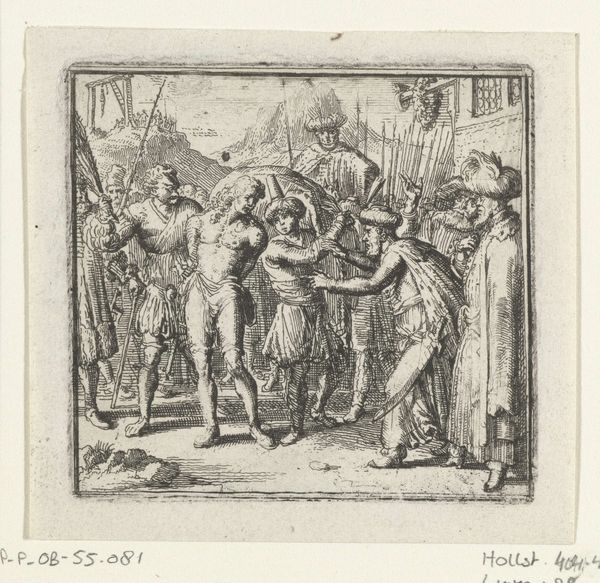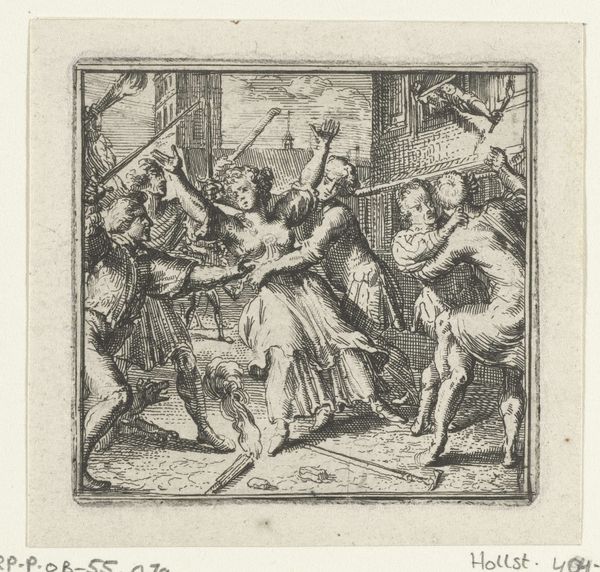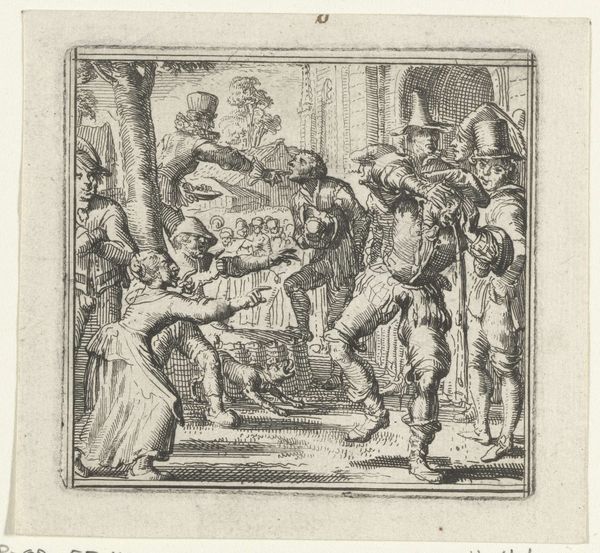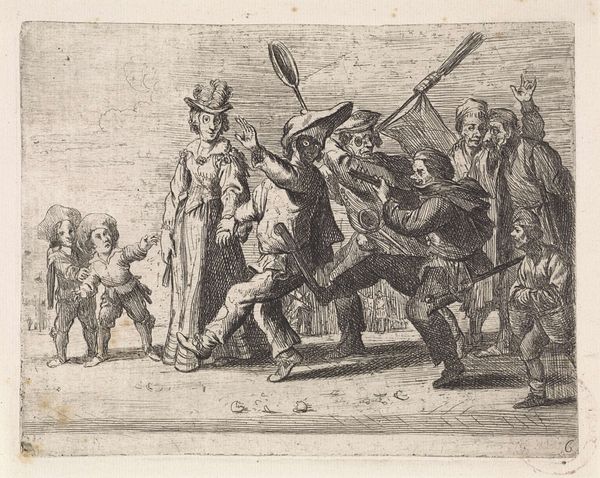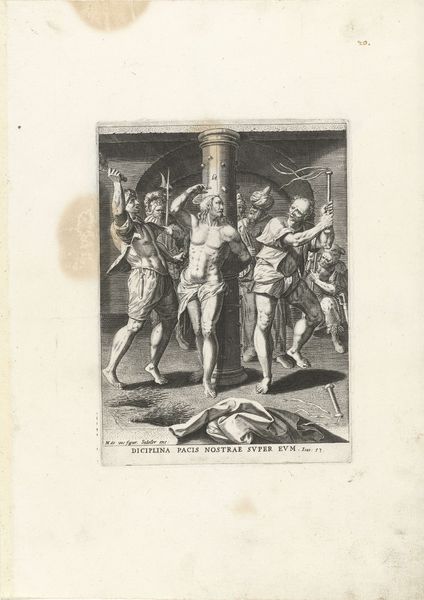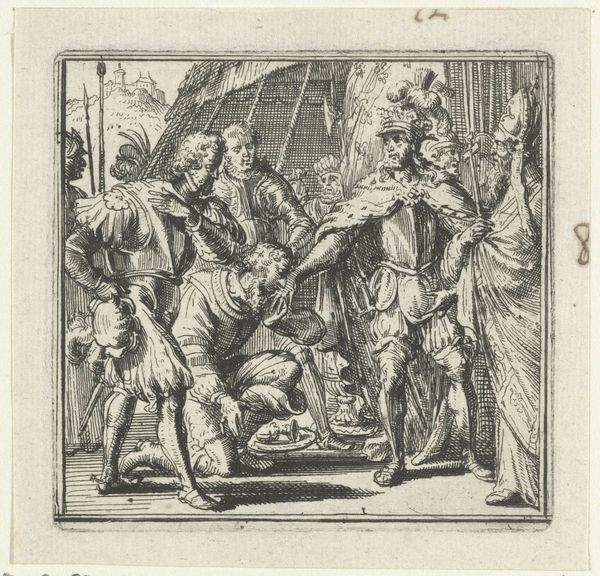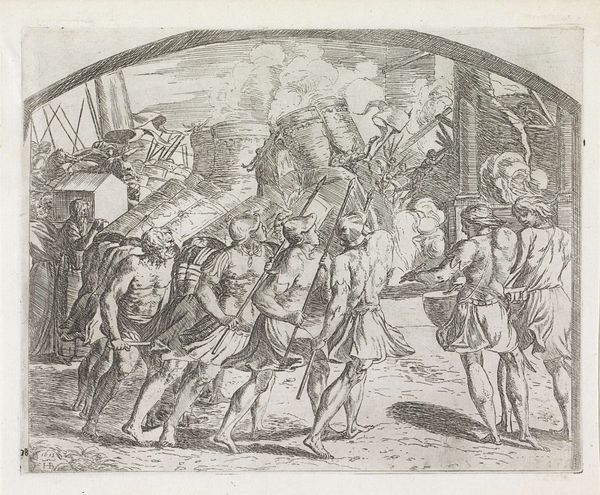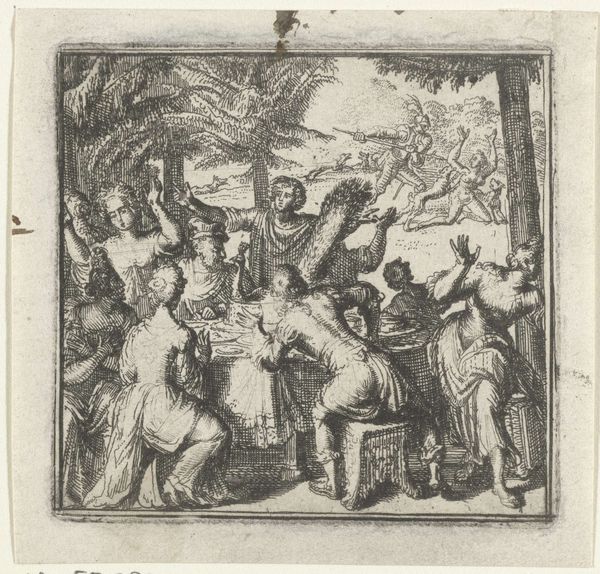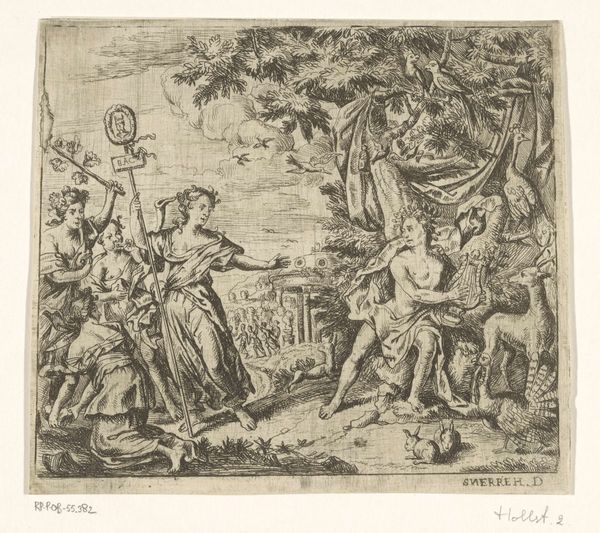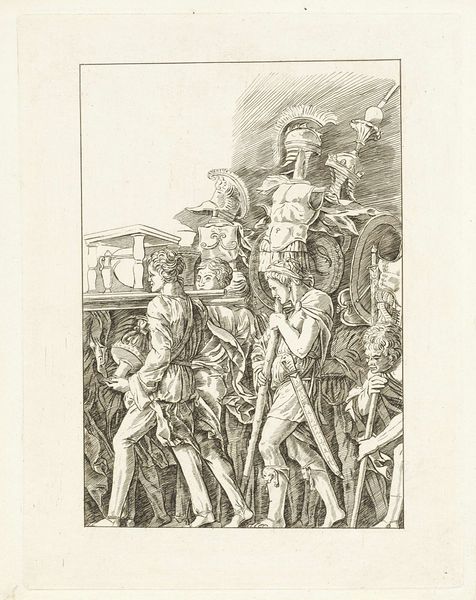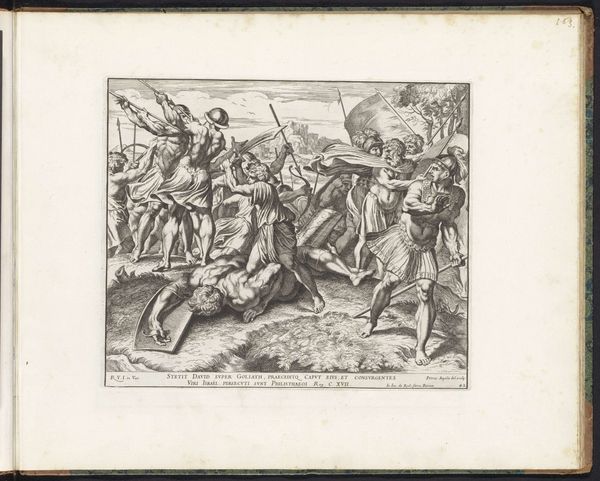
print, engraving
#
narrative-art
#
baroque
# print
#
pen sketch
#
old engraving style
#
figuration
#
line
#
history-painting
#
engraving
Dimensions: height 73 mm, width 80 mm
Copyright: Rijks Museum: Open Domain
This illustration for Boccaccio’s Decameron was made by Romeyn de Hooghe in the late 17th century. It presents a gentleman on horseback pointing with a spear, surrounded by peasants. Note the peasants’ tools – shovels and scythes. They are transformed here into weapons. This metamorphosis is an ancient motif, evoking the power of the collective when the oppressed rise. Consider, for example, depictions of the Flaying of Marsyas. The tools used to peel Marsyas' skin become symbols of brutality, akin to these agricultural implements turned to violent purposes. Throughout history, the tool has symbolized both creation and destruction, reflecting humanity's complex relationship with power. The emotional power of this image lies in the juxtaposition of the noble and the peasant, hinting at the volatile undercurrents of social unrest. This symbolic evolution reminds us that images are not static; they resonate with the fears and aspirations of each era.
Comments
No comments
Be the first to comment and join the conversation on the ultimate creative platform.
